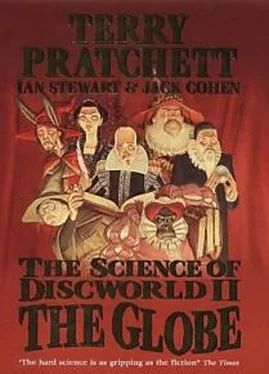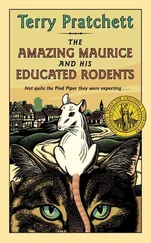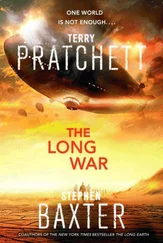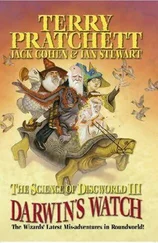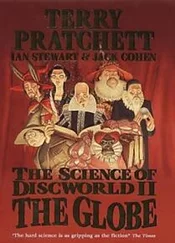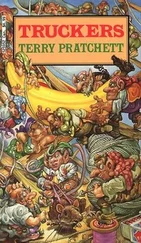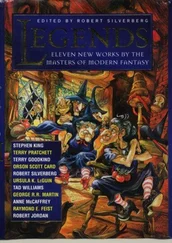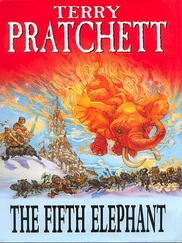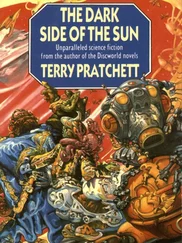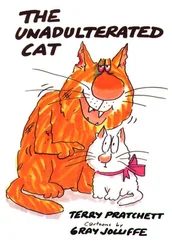Terry Pratchett - The Science of Discworld II - The Globe
Здесь есть возможность читать онлайн «Terry Pratchett - The Science of Discworld II - The Globe» весь текст электронной книги совершенно бесплатно (целиком полную версию без сокращений). В некоторых случаях можно слушать аудио, скачать через торрент в формате fb2 и присутствует краткое содержание. Жанр: Фантастика и фэнтези, на английском языке. Описание произведения, (предисловие) а так же отзывы посетителей доступны на портале библиотеки ЛибКат.
- Название:The Science of Discworld II - The Globe
- Автор:
- Жанр:
- Год:неизвестен
- ISBN:нет данных
- Рейтинг книги:5 / 5. Голосов: 1
-
Избранное:Добавить в избранное
- Отзывы:
-
Ваша оценка:
- 100
- 1
- 2
- 3
- 4
- 5
The Science of Discworld II - The Globe: краткое содержание, описание и аннотация
Предлагаем к чтению аннотацию, описание, краткое содержание или предисловие (зависит от того, что написал сам автор книги «The Science of Discworld II - The Globe»). Если вы не нашли необходимую информацию о книге — напишите в комментариях, мы постараемся отыскать её.
The Science of Discworld II - The Globe — читать онлайн бесплатно полную книгу (весь текст) целиком
Ниже представлен текст книги, разбитый по страницам. Система сохранения места последней прочитанной страницы, позволяет с удобством читать онлайн бесплатно книгу «The Science of Discworld II - The Globe», без необходимости каждый раз заново искать на чём Вы остановились. Поставьте закладку, и сможете в любой момент перейти на страницу, на которой закончили чтение.
Интервал:
Закладка:
Here's how the story goes. Carbon is created in red giant stars by a rather delicate process of nuclear synthesis, called the triple-alpha process. This involves the fusion of three helium nuclei [8] In the simplest picture of an atom, the nucleus is a relatively small central region made from protons and neutrons. Electrons 'orbit' the nucleus at a distance. The triple-alpha process takes place in a plasma, where the atoms have been stripped of their electrons, so only their nuclei are involved. Later, as the plasma cools, the nuclei can acquire the necessary electrons.
. A helium nucleus contains two protons and two neutrons. If you fuse three helium nuclei together, you get six protons and six neutrons. That, as it happens, is a carbon nucleus.
All very well, but the odds on such a triple collision occurring inside a star are very small.
Collisions of two helium nuclei are much more common, though still relatively rare. It is extremely rare for a third helium nucleus to crash into two that are just colliding. It's like paint- balls and wizards. Every so often, a paintball will go splat! against a wizard. But you wouldn't bet a lot of money on a second paintball hitting him at the exact same moment. This means that the synthesis of carbon has to take place in a series of steps rather than all at once, and the obvious way is for two helium nuclei to fuse, and then for a third helium nucleus to fuse with the result.
The first step is easy, and the resulting nucleus has four protons and four neutrons: this is one form of the element beryllium. However, the lifetime of this particular form of beryllium is only
1016 seconds, which gives that third helium nucleus a very small target to aim at. The chance of hitting this target is incredibly small, and it turns out that the universe hasn't existed long enough for even a tiny fraction of its carbon to have been made in this way. So triple collisions are out, and carbon remains a puzzle.
Unless ... there is a loophole in the argument. And indeed there is. The fusion of beryllium with helium, leading to carbon, would occur much more rapidly, yielding a lot more carbon in a much shorter time, if the energy of carbon just happens to be close to the combined energies of beryllium and helium. This kind of near-equality of energies is called a resonance. In the 1950s Fred Hoyle insisted that carbon has to come from somewhere, and predicted that there must therefore exist a resonant state of the carbon atom. It had to have a very specific energy, which he calculated must be about 7.6 MeV [9] 1 MeV is one million electron-volts. An electron-volt is a unit of energy, obviously, and for our current purposes it doesn't really matter what that unit is. For the record, it's the energy of an electron when its potential is raised by one volt, and is equal to 1.6 x 10 -12 ergs. And the energy referred to here is the excess energy compared to the lowest energy state of the atom, its 'ground state'. What's an erg? Look it up if you really need to know.
.
Within a decade, it was discovered that there is a state with energy 7.6549 MeV. Unfortunately, it turns out that the combined energies of beryllium and helium are about 4 per cent higher than this. In nuclear physics, that's a huge error.
Oops.
Ah, but, miraculously, that apparent discrepancy is just what we want. Why? Because the additional energy imparted by the temperatures found in a red giant star is exactly what's needed to change the combined energy of beryllium and helium nuclei by that missing 4 per cent.
Wow.
It's a wonderful story, and it rightly earned Hoyle huge numbers of scientific brownie-points.
And it makes our existence look rather delicate. If the fundamental constants of the universe are changed, then so is that vital 7.6549. So it is tempting to conclude that our universe's constants are fine-tuned for carbon, making it very special indeed. An it is equally tempting to conclude that the reason for that fine-tuning is to ensure that complex life turns up. Hoyle didn't do that, but many other scientists have given into these temptations.
Sounds good: what's wrong? The physicist Victor Stenger calls this kind of argument
'cosmythology'. Another physicist, Craig Hogan has put his finger on one of the weak points.
The argument treats the temperature of the red giant and that 4 per cent discrepancy in energy levels as if they were independent. That is, it assumes that you can change the fundamental constants of physics without changing the way a red giant works. However, that's obvious nonsense. Hogan points out that 'the structure of stars includes a built-in thermostat that automatically adjusts the temperature to just the value needed to make the reaction go at the correct rate'. It's rather like being amazed that the temperature in a fire is just right to burn wood, when in fact that temperature is caused by the chemical reaction that burns the wood. This kind of failure to examine the interconnectedness of natural phenomena is a typical, and quite common, error in anthropic reasoning.
In the human world, what counts is not carbon, but narrativium. And in that context we wish to state a new kind of anthropic principle. It so happens that we live in a universe whose physical constants are just right for carbon-based brains to evolve to the point at which they create narrativium, much as a star creates carbon. And the narrativium does crazy things, like putting machines on the Moon. Indeed, if carbon did not (yet) exist, then any narrativium-based lifeform could find some way to manufacture it, by telling itself a really gripping story about the need for carbon. So causality in this universe is irredeemably weird. Physicists like to put it all down to the fundamental constants, but it's more likely an example of Murphy's law.
But that's another story.
The more we think about narrative in human affairs, the more we see that our world revolves around the power of story. We build our minds by telling stories. Newspapers select news according to its value as a story, not according to how intrinsically important it is. 'England loses cricket match to Australia' is a story (though not a very surprising one) and it goes on the front page. 'Doctors think that they may have improved the diagnosis of liver disease by 1 per cent' is not a story, even though most science works like that (and in years to come, depending on the state of your liver, you might think it's a rather more important story than a cricket match).
'Scientist claims cure for cancer' is a story, though, even if the supposed cure is nonsense. So are
'spiritualist medium claims a cure for cancer', and 'Secret code predictions hidden in the Bible', more's the pity.
As we write, there is a furore over a small group of people who are proposing to clone a human being. It's a major story, but very few newspapers are reporting the most likely result of this attempt, which will be abject failure. It took 277 failures, many rather nasty, before Dolly the Sheep was cloned, and she has now been found to have serious genetic defects, poor lamb.
Trying to clone a human may indeed be unethical, but that's not the best reason for objecting to this misguided and foolish attempt. The best reason is that it won't work, because nobody yet knows how to overcome numerous technical obstacles; moreover, if by some stroke of
(mis)fortune it did happen to work, any child produced would have serious defects. Producing such a child, now that is unethical.
Making 'carbon copies' of human beings, which is the usual basis of the newspapers' story about the ethics, is beside the point. That's not what cloning does, anyway. Dolly the Sheep was not genetically identical to her mother, though she came close. Even if she had been, she would still have been a different sheep, moulded by different experiences. For that matter, the same would be true even if she was genetically identical to her mother. For the same reason, cloning a dead child will not bring that child back to life. Much of the media discussion of the ethics of cloning, like much of the public understanding of science, is vaguely stirred through with science fiction.
Читать дальшеИнтервал:
Закладка:
Похожие книги на «The Science of Discworld II - The Globe»
Представляем Вашему вниманию похожие книги на «The Science of Discworld II - The Globe» списком для выбора. Мы отобрали схожую по названию и смыслу литературу в надежде предоставить читателям больше вариантов отыскать новые, интересные, ещё непрочитанные произведения.
Обсуждение, отзывы о книге «The Science of Discworld II - The Globe» и просто собственные мнения читателей. Оставьте ваши комментарии, напишите, что Вы думаете о произведении, его смысле или главных героях. Укажите что конкретно понравилось, а что нет, и почему Вы так считаете.
